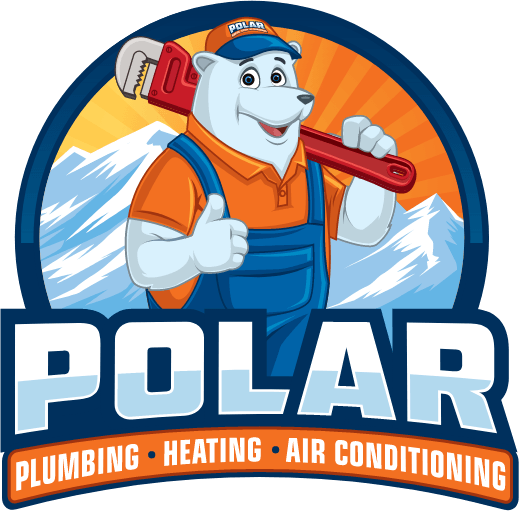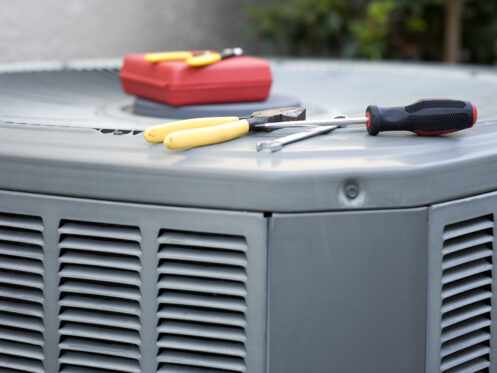Staying cool and comfortable amidst the heat of summer is a necessity, and cooling equipment has become an integral part of achieving this. Have you ever wondered about the efficiency of these cooling systems? The Seasonal Energy Efficiency Ratio, or simply SEER, comes into play when making informed decisions about the selection of air conditioners and heat pumps.
Understanding the SEER Rating
SEER ratings gauge the efficiency of air conditioners and heat pumps. This is done by dividing the cooling output, measured in BTUs, by the energy input, measured in watt-hours, across a standard cooling season. This calculation accommodates temperature variations, presenting a more precise reflection of the system’s performance under diverse conditions.
SEER ratings can vary, spanning roughly from 13 to 25 or even higher. A higher SEER rating corresponds to greater energy efficiency in an air conditioner or heat pump, consequently leading to reduced energy costs. While systems with higher SEER ratings exhibit enhanced efficiency, they might entail a higher upfront expenditure.
SEER vs. SEER2
On January 1, 2023, the Department of Energy introduced the SEER2 rating, which they determined was a more accurate way of testing HVAC systems. The main distinction between SEER and SEER2 lies in the stringency of the testing criteria.
HVAC professionals employ an external pressure testing approach to gauge efficiency. This examination employs a technique referred to as “inches of water in column,” denoted as “in. WC.” It quantifies the extent to which external pressure propels the ascent of water within the column.
Consequently, the new SEER2 rating undergoes testing with an external pressure that’s fivefold higher than the previous method. This is a more precise method for evaluating the efficiency of cooling systems.
Understanding SEER2 Ratings
SEER2 ratings take into account a broader range of operating conditions, providing a more accurate depiction of an HVAC system’s efficiency in various scenarios. Rather than relying solely on a single fixed temperature, SEER2 considers a spectrum of temperatures that align with actual climate conditions throughout a cooling season. This enhanced evaluation method enables consumers to make more informed decisions when selecting an HVAC system based on its real-world efficiency.
The Benefits of SEER2 Ratings
Precision in Real-World Performance
SEER2 ratings acknowledge the dynamic nature of climate conditions. They provide consumers with a clearer understanding of how their chosen HVAC system will perform under varying temperatures and humidity levels. This insight allows for more accurate energy consumption projections and helps users choose systems that align with their specific needs.
Incentive for Efficiency Innovations
Manufacturers may develop HVAC systems that perform optimally across a wide spectrum of conditions due to SEER 2 ratings. This can foster innovation in technology and design, leading to more energy-efficient systems that are environmentally friendly and cost-effective.
Long-Term Cost Savings
Investing in an HVAC system with a high SEER2 rating can lead to substantial long-term cost savings. Although these systems may come with a higher upfront cost, their enhanced efficiency translates to reduced energy bills over the system’s lifespan.
Reduced Carbon Footprint
SEER2 ratings promote sustainability by encouraging the use of HVAC systems that minimize energy waste. By consuming less electricity to achieve the same level of cooling, these systems contribute to a reduced carbon footprint and a healthier planet.
Strategies for Efficiency and Endurance
Choosing an air conditioner or heat pump that boasts a commendable SEER2 rating is an initial step towards energy efficiency. To ensure your cooling system’s enduring optimal performance and the preservation of its high SEER2 efficiency, meticulous maintenance and care hold paramount importance. Let’s explore practical guidelines to assist you in upholding the efficiency and longevity of your air conditioner or heat pump.
Optimal Thermostat Utilization
Smart thermostat usage can have a significant impact on your air conditioner’s efficiency. Leverage a programmable thermostat to adjust temperatures according to your schedule. Elevate temperatures when you’re absent to minimize cooling requirements.
Sealing and Insulation
Proper home insulation reduces heat transfer, reducing strain on your HVAC system. Inspect your home for air leaks around windows, doors, and ducts. Seal any gaps to prevent the infiltration of warm air. Ample insulation within your home’s walls and attic contributes to more stable indoor temperatures, diminishing the need for excessive cooling.
Professional Maintenance
Regular professional maintenance ensures that your air conditioner or heat pump functions at peak efficiency. Enlist a professional HVAC technician to inspect and service your system annually. They can detect and address efficiency-affecting issues that could be compromising your SEER rating.
SEER2 Considerations for Homeowners
While the benefits of high SEER2-rated HVAC systems are evident, there are several important considerations that homeowners should keep in mind when evaluating their options.
Initial Cost vs. Long-Term Savings
High SEER2-rated systems often come with a higher upfront cost compared to lower-rated systems. While the initial investment may be more substantial, it’s important to weigh this against the long-term savings in energy bills. Calculate the potential payback period to determine whether the higher initial cost aligns with your budget and financial goals.
Climate and Usage
The climate in which you live plays a significant role in how often your HVAC system will be used. If you live in an area with mild temperatures, you might not need the highest SEER2-rated system available. Conversely, in regions with hot and humid climates, a higher SEER2 rating can lead to more substantial energy savings over time.
Return on Investment
Consider how long you plan to stay in your current home. If you’re planning to move in the near future, the long-term energy savings of a high SEER2-rated system might not have enough time to offset the initial cost. On the other hand, if you plan to stay for many years, the return on investment becomes more compelling.
Proper Sizing
Selecting the right-sized HVAC system for your home is critical for efficiency. An oversized system can cycle on and off frequently, leading to energy waste, while an undersized system will struggle to maintain the desired temperature. Consult with an HVAC professional to ensure proper sizing based on your home’s criteria.
Warranty and Maintenance
Check the warranty provided by the manufacturer of the HVAC system you’re considering. Many SEER-rated systems come with extended warranties that can provide peace of mind. Additionally, inquire about recommended maintenance schedules and costs, as proper maintenance is essential for maintaining efficiency and performance.
Tax Incentives and Rebates
Research any available tax incentives, rebates, or local programs that make it worth investing in an energy-efficient HVAC system. These incentives can significantly offset the initial cost and make upgrading to a high SEER-rated system more financially attractive.
Exploring HVAC Systems with the Most Optimal SEER Rating
SEER and SEER2 ratings serve as valuable tools for homeowners to assess air conditioning system efficiency. By grasping the intricacies of SEER ratings, you’re empowered to make educated choices when purchasing a new unit. Keep in mind that while higher SEER ratings offer superior efficiency and cost-effectiveness, the ideal decision hinges on unique factors pertinent to your situation. Contact Polar Plumbing, Heating & Air Conditioning today to transition to an air conditioner or heat pump that has a better SEER2. We also offer plumbing solutions such as hot water heater repair and maintenance, ductless AC installation, and indoor air quality assessments in the Newburgh, NY, area.

